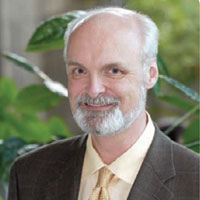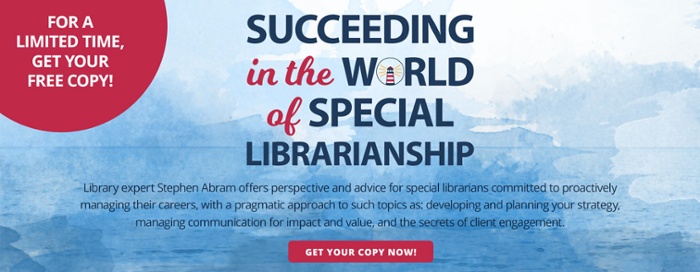
We scan the horizon—not just for survival—but for fun and professional development. We have entered a period where massive convergence is stepping up its game. We are no longer just dealing with the convergence of physical technologies into a standard device, as in the past decade where we saw phones, cameras, wallets and payments, loyalty cards, music players, video players, and gaming devices appear along with so much more on our ‘smart’ phones.
What we are now experiencing is the convergence of behavioural data across the spectrum. And that’s scary and exciting in equal measure. Of course, we need to have the conversation about regulatory issues around net neutrality, privacy, copyright, patents, acceptable use, opting out, and so much more. But for now, this post is about identifying what is on our horizon and how we might exploit these innovations in libraries.
Here are a few big opportunities and some definitions:
- Artificial Intelligence
- Augmented Reality
- Machine Learning
- Social Media NextGen
- Social Networking
- Internet of Things
- Voice Response Devices
- Robotics and Robots
- Machine-based Active Listening
- The Web’s Next Generation (or the death of the Web as we know it)
Artificial Intelligence
The theory and development of computer systems able to perform tasks that normally require human intelligence, such as visual perception, speech recognition, decision-making, and translation between languages.
Augmented Reality
A technology that superimposes a computer-generated image on a user's view of the real world, thus providing a composite view.
Machine-based Learning
A method of data analysis that automates analytical model building. It is a branch of artificial intelligence based on the idea that systems can learn from data, identify patterns and make decisions with minimal human intervention.
Social Media NextGen
Forms of electronic communication (such as websites for social networking and microblogging) through which users create online communities to share information, ideas, personal messages, and other content (such as videos).
Social Networking
The creation and maintenance of personal and business relationships especially online.
Internet of Things (IoT)
The Internet of Things (IoT) is the network of physical devices, vehicles, home appliances, and other items embedded with electronics, software, sensors, actuators, and connectivity which enables these things to connect, collect and exchange data, creating opportunities for more direct integration of the physical world into computer-based systems, resulting in efficiency improvements, economic benefits, and reduced human exertions.
The number of IoT devices increased 31% year-over-year to 8.4 billion in the year 2017 and it is estimated that there will be 30 billion devices by 2020.The global market value of IoT is projected to reach $7.1 trillion by 2020.
IoT involves extending Internet connectivity beyond standard devices, such as desktops, laptops, smartphones and tablets, to any range of traditionally dumb or non-internet-enabled physical devices and everyday objects. Embedded with technology, these devices can communicate and interact over the Internet, and they can be remotely monitored and controlled. With the arrival of driverless vehicles, a branch of IoT, i.e. the Internet of Vehicle starts to gain more attention.
Voice Response Devices
A voice response system (VRS) is a computer interface which responds to voice commands, instead of responding to inputs from a mouse or a keystroke. It is a type of speech synthesis where sentences are organized by concatenating pre-recorded words saved in a database.
Machine-based Active Listening
Computer audition (CA) or machine listening is general field of study of algorithms and systems for audio understanding by machine. Since the notion of what it means for a machine to "hear" is very broad and somewhat vague, computer audition attempts to bring together several disciplines that originally dealt with specific problems or had a concrete application in mind. The engineer Paris Smaragdis, interviewed in Technology Review, talks about these systems: “… software that uses sound to locate people moving through rooms, monitor machinery for impending breakdowns, or activate traffic cameras to record accidents."
Inspired by models of human audition, CA deals with questions of representation, transduction, grouping, use of musical knowledge and general sound semantics for the purpose of performing intelligent operations on audio and music signals by the computer. Technically this requires a combination of methods from the fields of signal processing, auditory modelling, music perception and cognition, pattern recognition, and machine learning, as well as more traditional methods of artificial intelligence for musical knowledge representation.
Robotics (and virtual robots)
The branch of technology that deals with the design, construction, operation, and application of robots.
A machine capable of carrying out a complex series of actions automatically, especially one programmable by a computer.
- (especially in science fiction) a machine resembling a human being and able to replicate certain human movements and function automatically
- Used to refer to a person who behaves in a mechanical or unemotional manner “public servants are not expected to be mindless robots”
The Web’s Next Generation (or the death of the Web as we know it)
The Web is dead—long live the Web.
We already went through that transition—from Internet dominance through Web dominance through mobile dominance.
What’s next? In the next few posts we’ll explore how each of these technology innovations may —or may not—affect our library, museums, archives, and information systems and services.
But what do we mostly see here in these trends? They’re not just about transactional technologies for improving speed and process. They’re about adapting to human behaviours and “remembering”. We’ll explore how to analyze these behaviours in future posts and the role of persona development in adapting to these changes.
-Stephen
Stephen Abram is a popular Lucidea Webinars presenter and consultant. He is the past president of SLA, and the Canadian and Ontario Library Associations. He is the CEO of Lighthouse Consulting and the executive director of the Federation of Ontario Public Libraries. He also blogs personally at Stephen’s Lighthouse. Check out his new book from Lucidea Press, Succeeding in the world of Special Librarianship!



